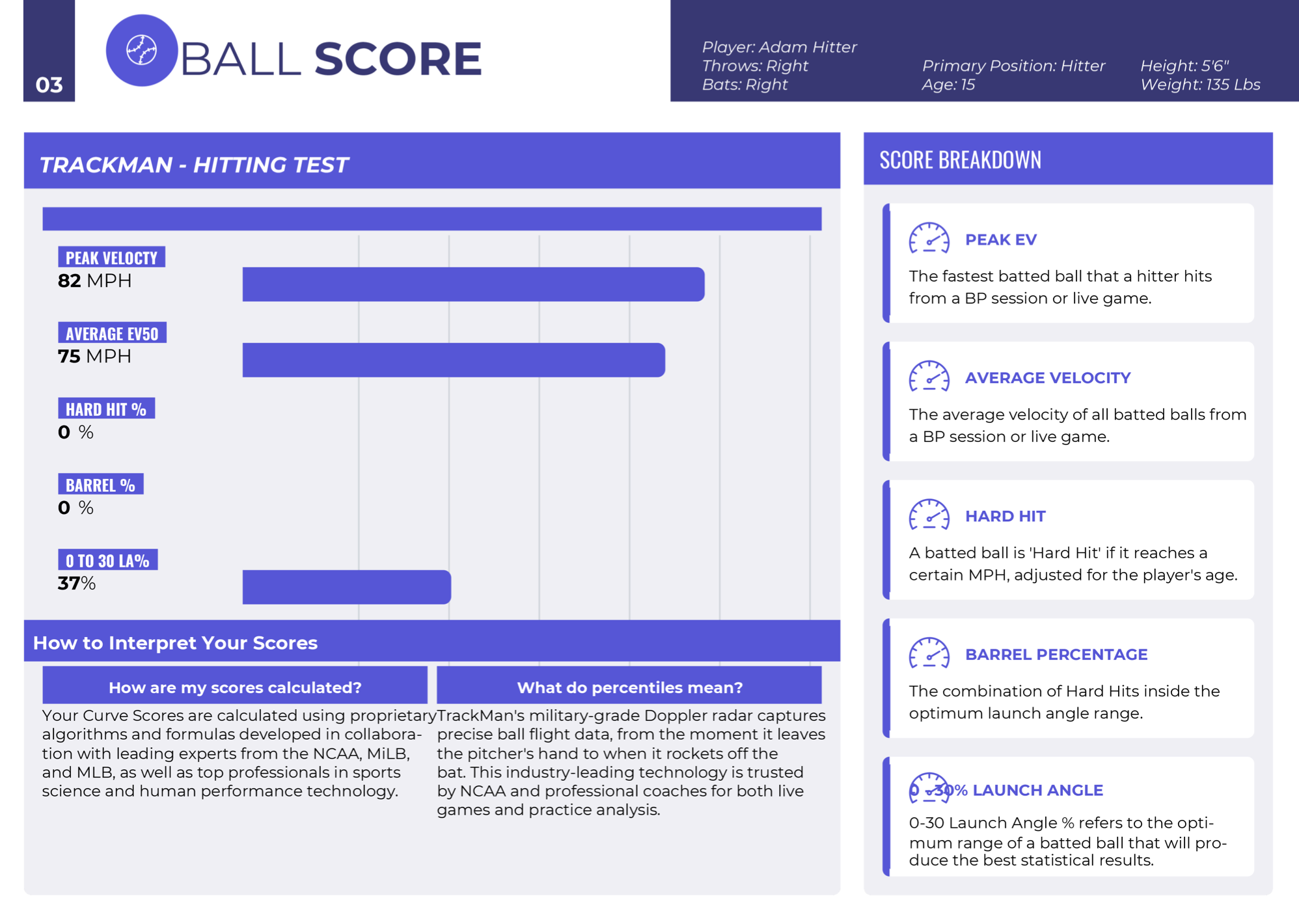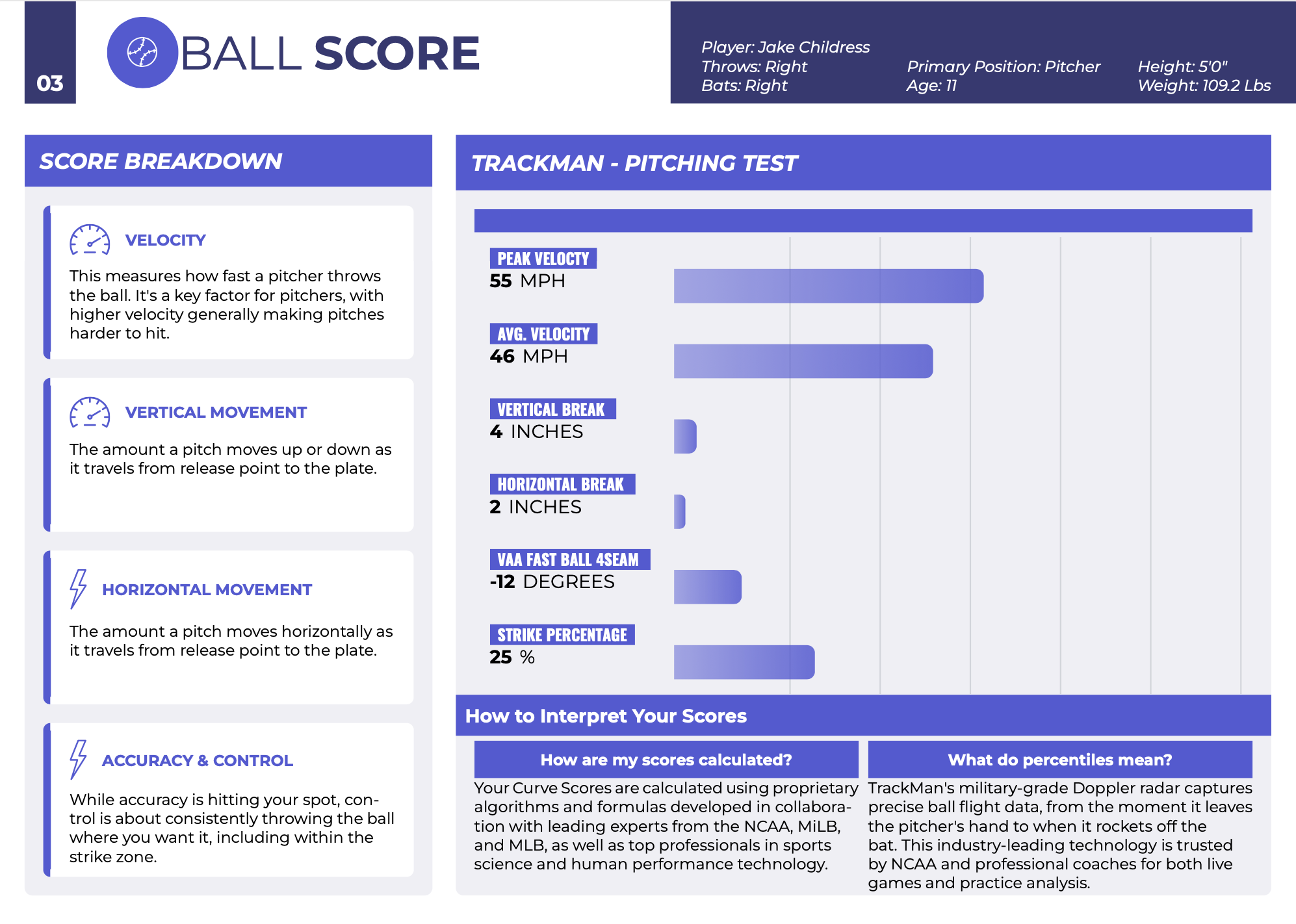WHAT AND WHY WE TEST
BALL SCORE
Hitting Terms

Exit velocity directly correlates with offensive performance. It measures the speed of the ball off the bat after contact, providing valuable insights into a hitter’s power and effectiveness. Players who can generate high exit velocities consistently are more likely to excel at higher levels of baseball.
Pitching Terms

Peak velocity is a critical measure of a pitcher’s arm strength, potential, and effectiveness. While command and pitch movement are also crucial, pitchers who throw harder tend to have a greater margin for error and a higher ceiling for success




